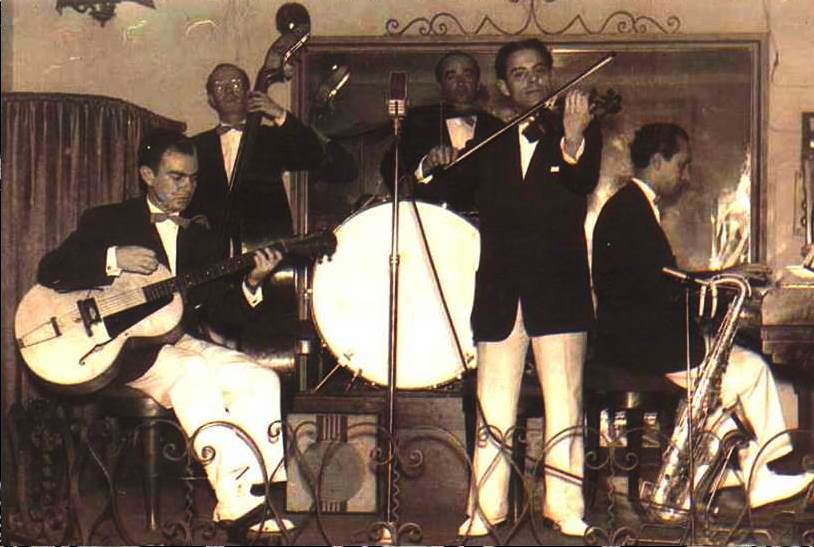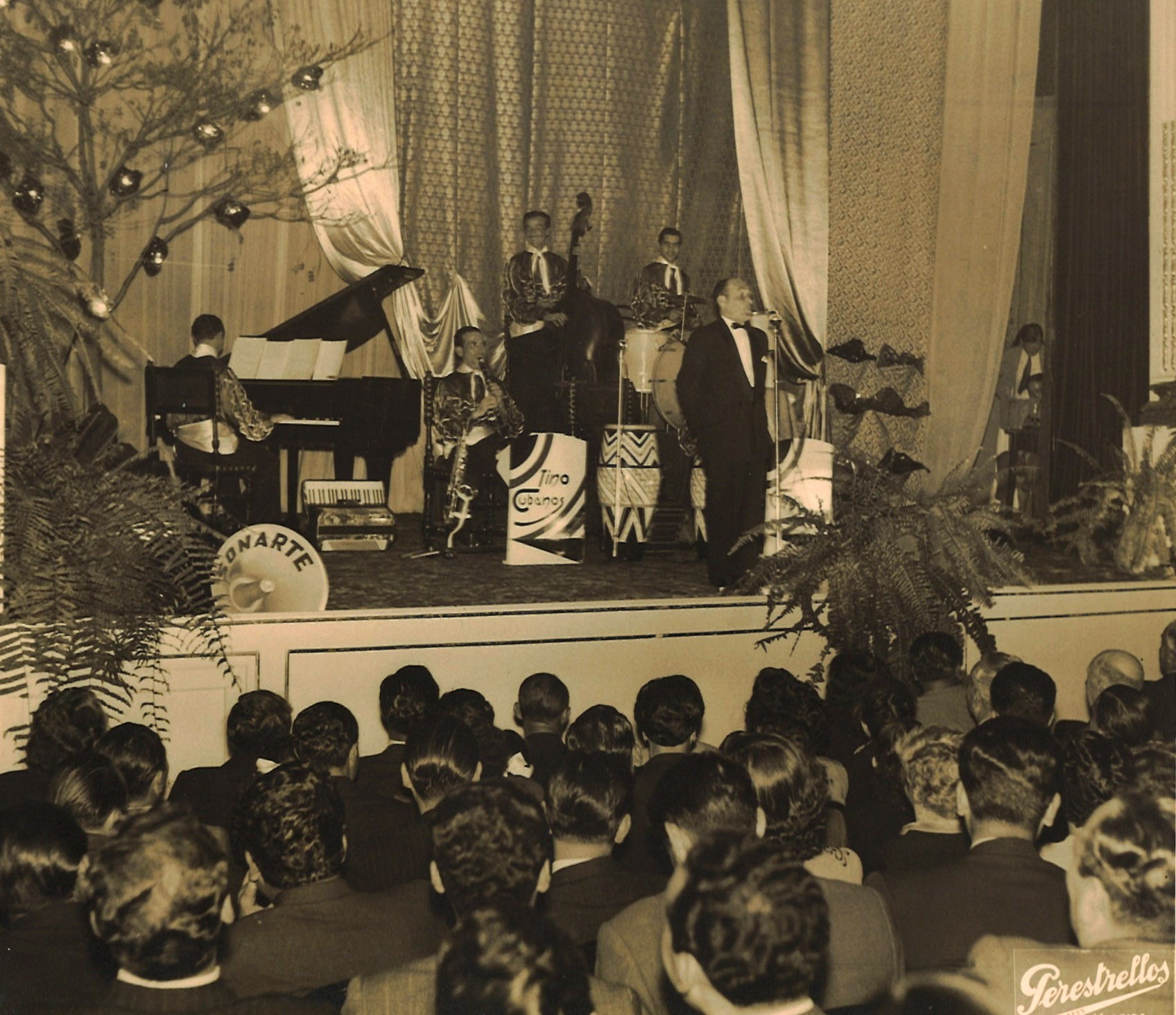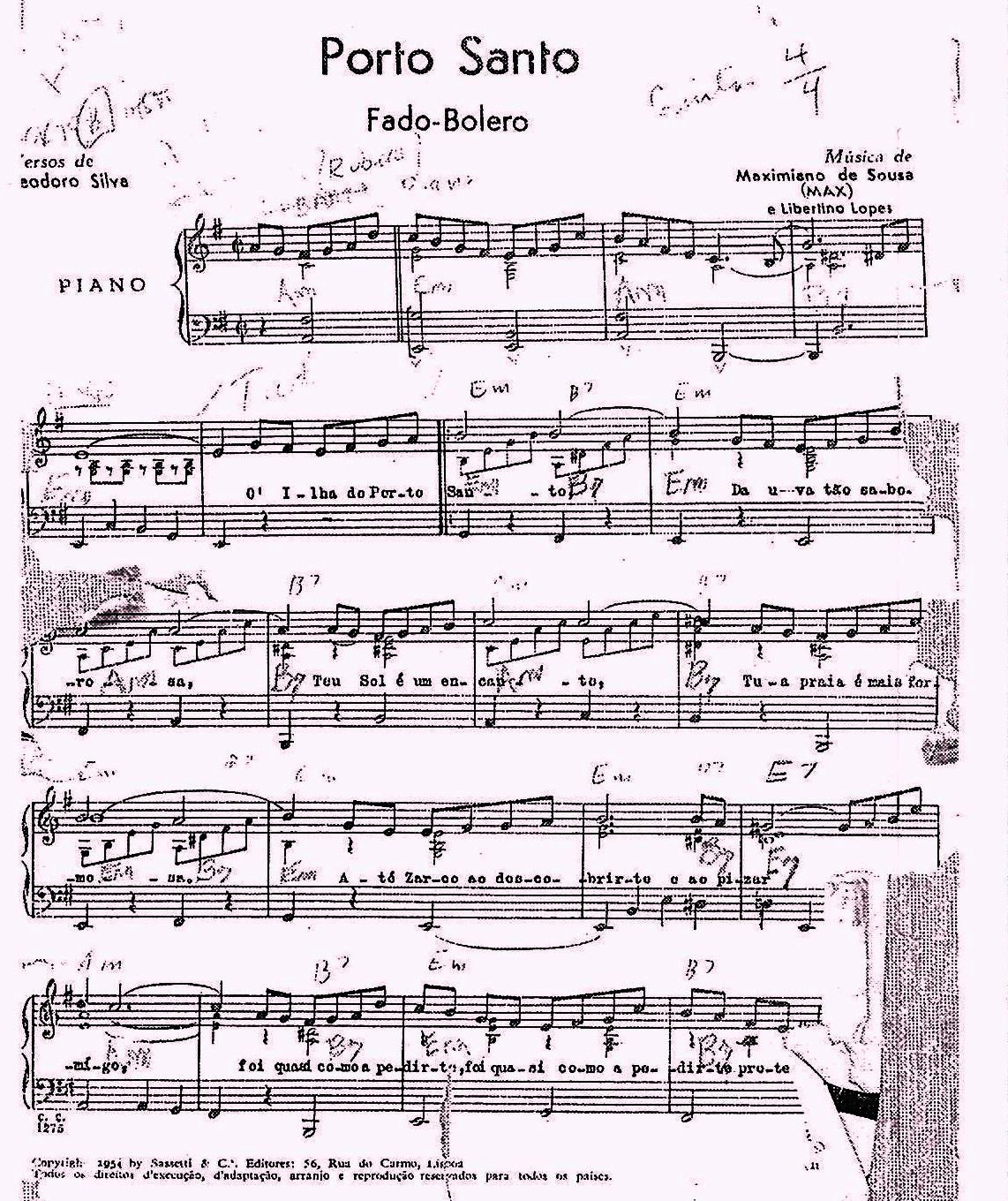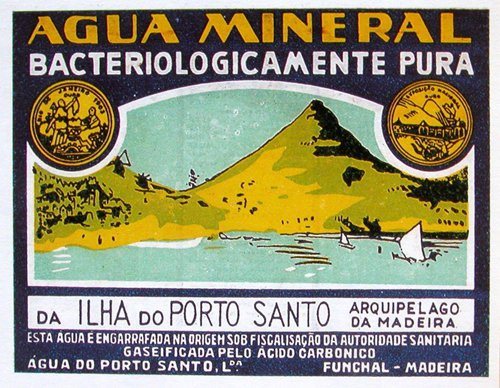Libertino Lopes, was the co-author of the song “Porto Santo”. An advertising jingle that became Song.
Libertino Lopes was one of the leading exponents of the Madeiran musical night in the 1950s. Pianist, double bassist and composer, he went through the already mythical “Flamingo”, a noble space in Funchal music. At “Solar da Dona Mécia”, in neighboring “Rua dos Aranhas”, he formed the “Tino Cubanos” group, with which he would launch the hot rhythms of South America. Like many other young Madeiran musicians, he embarked on a national career playing in Lisbon, Figueira da Foz, Ponta Delgada (Azores) and in one of the orchestras on board of the ships that made the route of the islands (maritime circuit between Madeira, Azores and Lisbon). Throughout his career, he has played many shows and, above all, dance music, oriented towards Latin American rhythms: Samba, Rumba, Tango and Bolero. A musician of great talent recognized by his peers and with the public’s affection. The “Tino Cubanos” accompanied on January 27, 1953, the singer Max at the Municipal Theater of Funchal. It was at that time that a composition was born and was forever part of the history of Portuguese light music. Libertino Lopes co-authored with Maximiano de Sousa and created the song “Porto Santo”. This association between two musicians and friends that began by the words of Teodoro Silva, another illustrious son of the land. One part of the song (the chorus) was already composed by the singer Max, missing a second part. According to José Marques dos Santos, musician and friend of both mentioned, Max and Libertino Lopes met at “Café do Teatro” and then went to “Solar da Dona Mécia”, a space where Libertino Lopes played at the time. In just over an hour he composed the missing part, transcribing the full song to a music sheet, handing it over to Max to record in Lisbon. This theme came from an order, requested to the great artist Maximiano de Sousa by “Águas do Porto Santo”, a company that explored the mineral water of the golden island. The intention was to use the song as radio advertising and not as a repertoire song. In the 1950s, it was on Radio that all advertising for products and brands was done, with programs paid entirely for advertising. An advertisement spot could cost some money in its production, but the investment was justified. The number of listeners was growing and that was the fastest way to reach the big crowd. Programs such as “Companheiros da Alegria”, by Francisco de Igrejas Caeiro, “O Comboio das Seis e Meia”, by José Castelo or “Vozes de Portugal”, by José Rocha were “Radio Advertising Programs”. What started out as the musical idea for an advertising “jingle” has turned in Lisbon (at the time of recording, by decision of one of the music producers present), a great national success. The song was worthy of being recorded and integrated into the artist's repertoire. So it happened. Since its launch in 1954, the big crowd has received the song as a true hymn to Porto Santo Island, as a place and space of great natural beauty, but also to its friendly and simple people. In short time, “Porto Santo” became one of the signature melodies of the singer Max himself. A “Fado Bolero” that ran around the world and was highlighted during the Madeiran singer's tour to the United States of America, between 1956 and 1959. This song was, according to his words, the most applauded and requested in all his performances. Let us listen today to “Porto Santo” with more attention because, the second part of this emblematic song, has the creative touch of Libertino Lopes.
Text: Vítor Sérgio Sardinha







